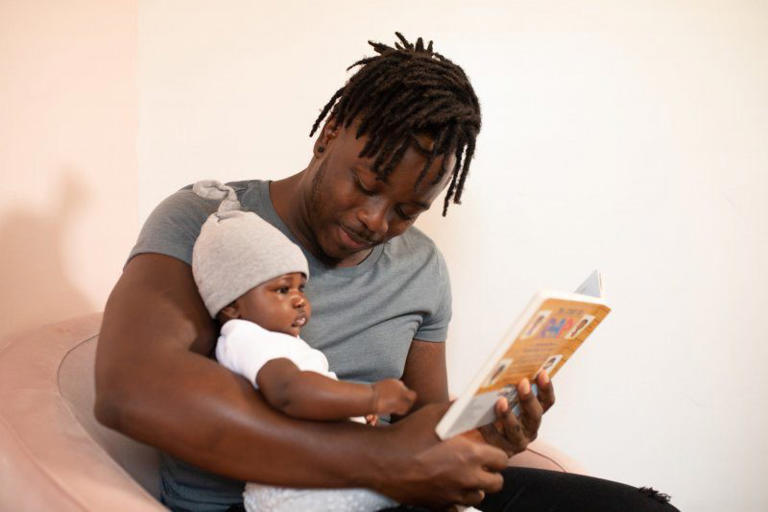












How to Teach Deaf Children to Read
Hearing Loss
According to the CDC, at least one in 1,000 babies are born with a hearing loss. Historically, a hearing loss could go overlooked in a baby for months and even years, but fortunately, at present approximately 98% of infants are screened for a hearing loss. Identifying a hearing loss in infants is critical, because the first three years of life are crucial for speech and language development and it’s important for all children to have linguistic input from birth. Without exposure to language within this time period, learning to read and write becomes significantly more difficult. To find out detailed information regarding speech and language milestones, visit the US Department of Health and Human Services.
Being categorized as Deaf refers to a wide array of people; the hearing loss varies from person to person and can change over time. For example, an individual could grow up hard of hearing, with a mild hearing loss, and then completely lose their hearing later in life (also known as a progressive loss). Not all hearing loss is the same and some types of hearing loss include the following:
- Severe to profound loss
- According to the American Speech-Language-Hearing Association (ASHA), a severe to profound loss is when the degree of loss determined by the audiologist conducting the hearing test finds that the Decibel (dB) loss is 71 or higher, meaning that something has to be at least 71 dB loud, or louder, in order to hear it.
- Moderate to moderately severe loss
- This means the individual can only hear sounds when they are between 41-70 dB.
- Slight to mild loss
- This means the individual can only hear sounds when they are between 16-40 dB. An individual who can hear 15 dB or below is categorized as having typical or normal hearing without a loss.
- Functional loss
- This type of loss refers to an unexplained hearing loss.
- Progressive loss
- As stated earlier, a progressive loss refers to a change in hearing loss over time.
- Auditory neuropathy This is a disorder in which the inner ear detects sound, but is unable to process the sound normally.
- Scientists have finally discovered the cause of morning sickness
- What young children need
- Breakthrough menopause drug that targets key symptom given approval for use in UK
- Keeping your children safe online: All you need to know
- Dear Exhausted and Burnt Out Parents, We’re Here to Help
- How to talk to your kids about death
- Use of menopausal hormone therapy beyond age 65 years and its effects on women's health outcomes by types, routes, and doses
- Scientists debunk myth that human brains are 'underdeveloped' at birth
- What are the health risks to children who vape?
- Changes to skin during menopause explained by experts, including dry skin and acne
- Acting Tips for Kids: How to Engage Your Child Through Theater
- How to nurture creativity in your kids
- Nine things you must consider before adopting a child
- An Overview of Psoriasis in Children
- DIY Fertility Tests Are On The Rise, But How Reliable Are They?
- Dentist shares when children should stop using dummies - or risk bite issues
- Top 10 benefits of breastfeeding
- Reye's syndrome: The illness that affects children
- Diphtheria symptoms: Everything you need to know after case confirmed at UK school
- Children with 'prominent' forehead may in fact be suffering from a dangerous illness
- Study assesses links between early negative life events, orbitofrontal cortical thickness and depression in young adults
- Placenta tumour: My miracle baby gave me cancer
- 7 things to look out for when it comes to vaginal health, according to gynaecologists
- What is the vaginal microbiome?
- What every woman should know about hormones, the pill and cancer
- Home
- Aches and Pains
- Children - Insomnia
- New Born Babies
- Babies From 2-12 months
- Spina Bifida
- Equipment Used
- Drug Abuse
- Other Ingredients
- The Handicapped Child
- Videos
- BALANITIS - Aromachildhood
- Worms
- Corona virus and pregnancy
- Contact Us
- Essential Oils for General Purposes
- The Methods - Aromatherapy - Children-2
- Hydrolats, Essential Oil Waters, and infused Oils
- Ringworm
- The Methods - Aromatherapy - Children- 3
- Basic Care Kit - Children - Essential Oils
- Web Links
- Acne
- Adolescent Acne
- The A - Z of Conditions
- Arthritis (juvenile Rheumatoid)
- Herbal Healing Infused Oils
- Things To Make For Your First Aid Cabinet
- The Cave Man Eating Plan
- The Basic Care Kit For Children
- Verrucas and Warts
- Caring Touch Massage
- The Methods - Aromatherapy - Children
- The Methods - Aromatherapy - Children - 4
- Athlete's Foot - 2
We have 19 guests and no members online







